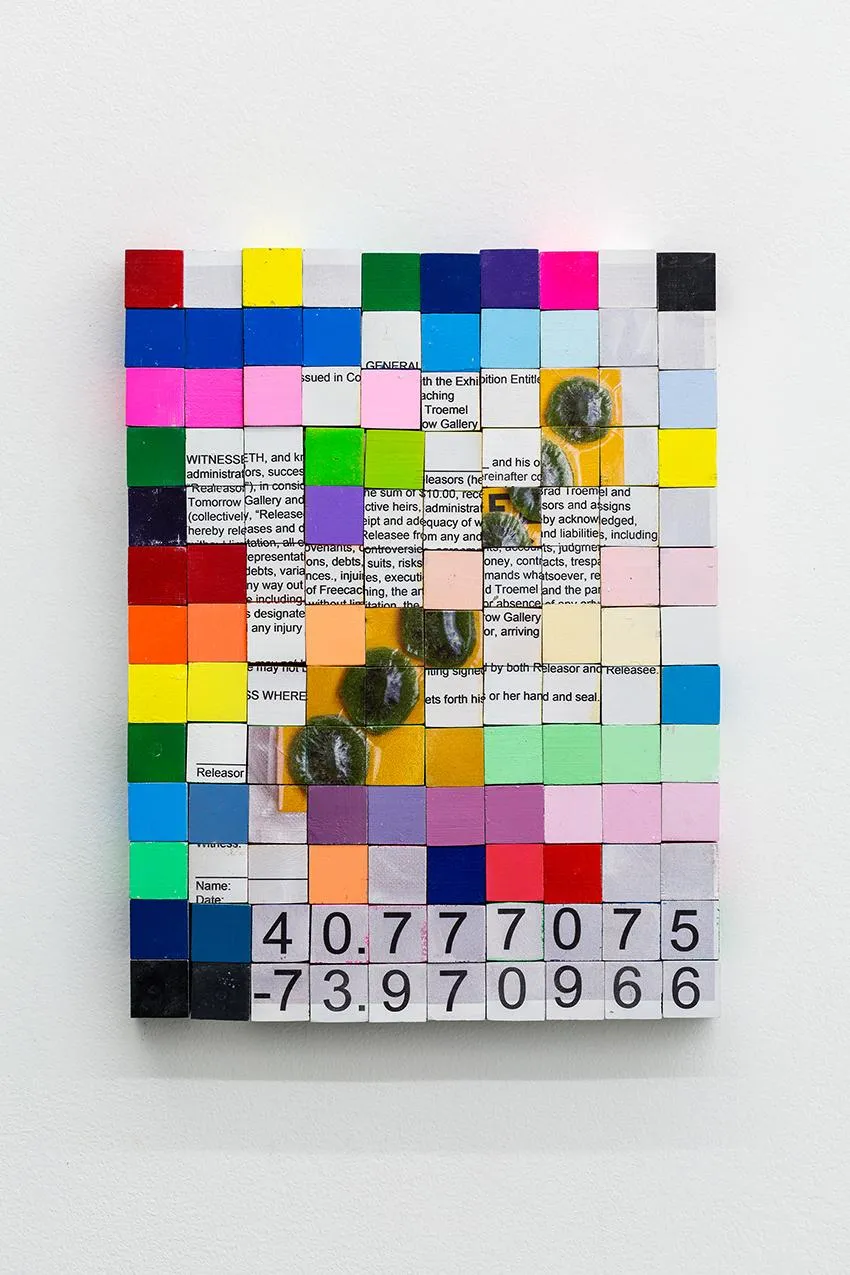Artist Geocaches His Work Throughout Central Park
Brad Troemel’s Freecaching is a tongue-in-cheek response to New York’s high rent and a new way to “store” artwork
/https://tf-cmsv2-smithsonianmag-media.s3.amazonaws.com/filer/81/17/8117abaf-7fae-4edd-bac4-644535346309/gallery_1.jpg)
Brad Troemel’s current show at the Tomorrow Gallery in Manhattan may not be the toast of the town. The rectangular shaped wooden blocks hanging on the walls look like multi-colored chess boards with documents and images decoupaged onto them. But the blocks aren’t the artworks for sale in the gallery. The real artworks have been vacuum-sealed and stashed in tree stumps, between rocks and under leaves all over Central Park as part of a geocached art collection.
According to a press release, Troemel got the idea for geocaching his artwork around the park while contemplating real estate in New York. He was Airbnb-ing his apartment and subletting his art studio to make ends meets, sleeping in whichever wasn’t occupied at the time. That’s when he had a thought: “What if you could rent out space to others that you don’t live in or own?”
That led him to the idea of geocaching, a hobby in which users hide small trinkets or log books in public spaces like forests, parks and urban areas. Other geocachers use GPS coordinates to then find the cache, either taking and leaving a trinket or signing their name. He reasoned that, instead of paying for a dedicated space to store all of his artwork, he could use the geocaching cloud to store his art, a process he calls “freecaching.”
Troemel explains:
“Through Freecaching you could leave art physically protected and concealed in an uninhabited area outside a major center of arts commerce and provide buyers with the exact latitude and longitude of a purchase. Hidden enough so no one could feasibly stumble upon it, but close enough to find within a train ride from the gallery. Collectors could choose to pick their work up or just as comfortably leave it concealed and protected outdoors, knowing with confidence that no one but they and the artist have knowledge of where the work is located.”
His current show is his first foray into freecaching, and he stashed 15 art pieces around the park. According to Alyssa Danigelis at Seeker, the wooden blocks in the gallery are painted in vibrant colors and work as a magnetic puzzle. The opposite side has a certificate of authenticity. Once the blocks that make up the grid are arranged correctly, they reveal an image of the artwork for sale and its GPS coordinate within Central Park.
“It’s meant to make use of the abundance of space in New York, which otherwise feels like it’s kind of closing in on you, between the price of rent and the constant shuffle of neighborhoods and transportation,” Troemel tells Casey Lesser at Artsy. “It’s a bit tongue-in-cheek, because for a single exhibition it’s arguably as much if not more labor to do all of this than it is to live amidst the clutter.”
The project fits comfortably within Troemel’s overall body of work, writes Lesser. In the past, Troemel has focused on art that can change over time, for instance panels of brightly colored soil that were rearranged by tunneling ants. He also runs a spoof Etsy store, Ultra Violet Production House selling Ethernet clotheslines, ball-filled tornado shelters and a tee shirt covered in succulents.
Troemel’s freecached art work has already gotten a test run. He recently released the GPS coordinates of two of his artworks to the public. Taylor Lindsay at The Creators Project interviewed the first people to hunt down Troemel’s pieces. The lucky treasure hunters used Google maps successfully to scour the park in search of the artworks, which they eventually tracked down, despite suffering from a skinned knee in the process.
Troemel's Tomorrow Gallery exhibition is by appointment only until January 2 and will run until January 8.
